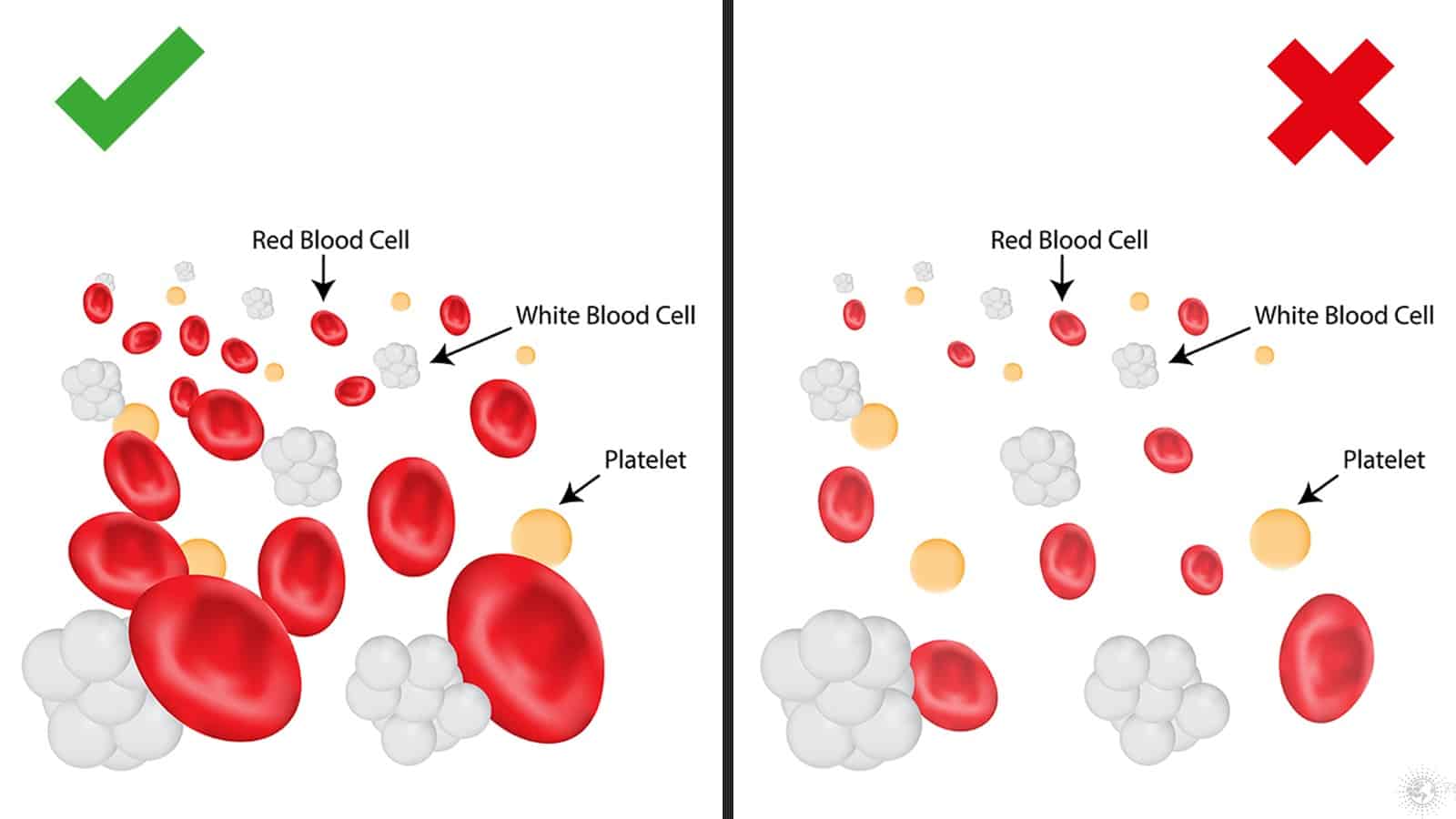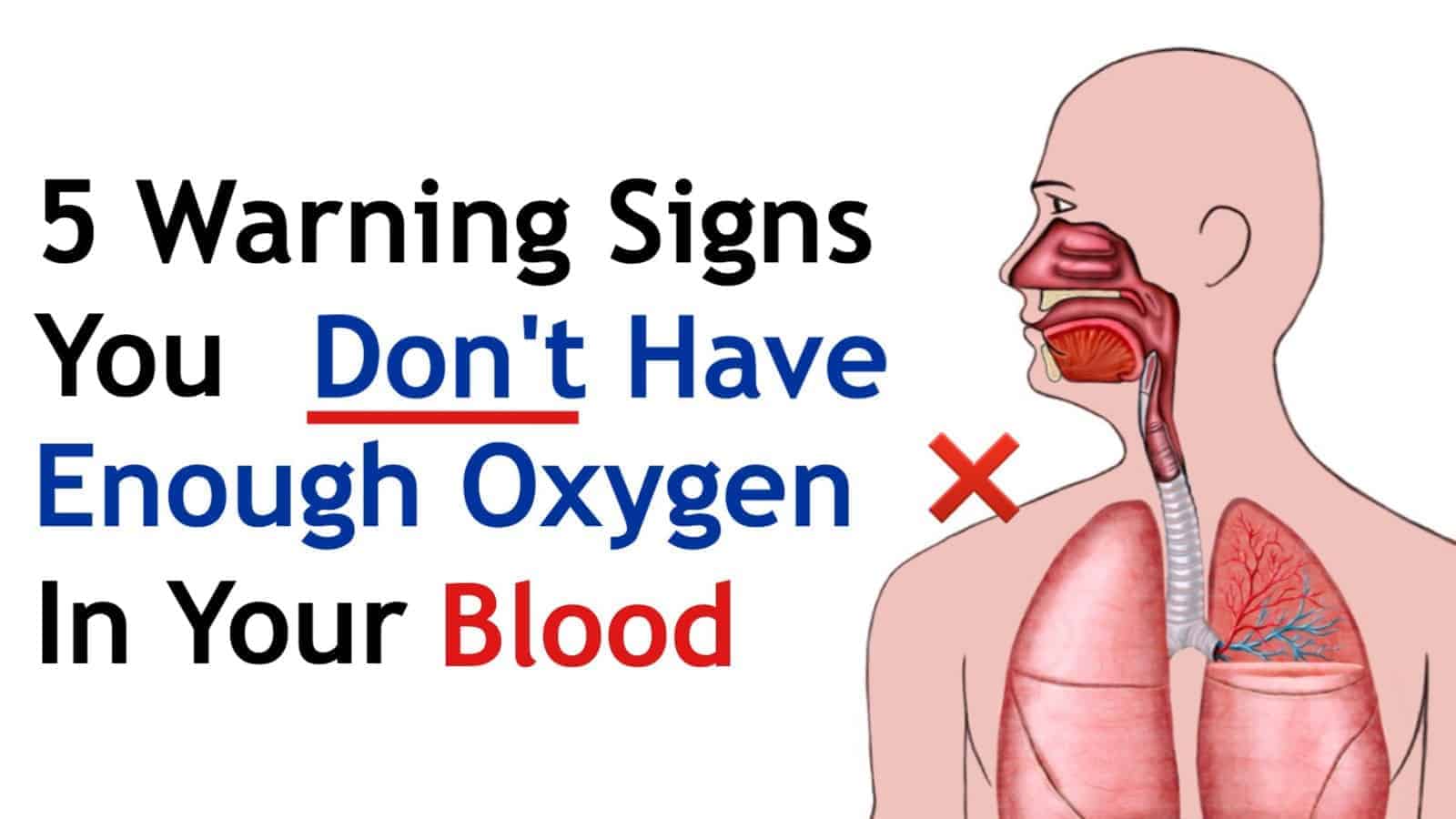Red blood cells (RBCs) are round, flat cells that serve an essential function: carrying fresh oxygen throughout the body.
Hemoglobin (‘he-moe-glow-bin’), the protein found inside RBCs, enables the cells to transport oxygen. RBCs also remove carbon dioxide from the body; carrying CO2 to the lungs for exhalation.
RBCs are produced inside bone marrow. The cells typically live for around 120 days before dying.
Chronic and Acute Anemia
Anemia is a condition that is caused by a decrease in the production of either RBCs or hemoglobin. The symptoms of anemia, which we will discuss shortly, are caused by loss of blood, the destruction of RBCs, or the abnormality of hemoglobin in the blood.
Two general kinds of anemia exist: long-term (chronic) or short-term (acute).
The physiology of individuals suffering from chronic anemia may adapt to low oxygen levels, which can make the condition difficult to detect without proper blood tests.
In the case of acute anemia, people often experience a quick escalation of symptoms, even with relatively mild changes in the body’s hemoglobin levels.
Hemoglobin
Hemoglobin, besides enabling RBCs to transport oxygen, also plays an essential role in maintaining the cell’s shape. Naturally, RBCs are round with narrowed and small centers, sort of like a doughnut without a hole.
When the structure of RBCs hemoglobin is abnormal, the cell cannot properly carry oxygen to cells. Also, RBCs ability to flow through blood vessels may be affected.
5 Signs of A Low Red Blood Cell Count
As mentioned, the type of anemia one suffers from may lead to different symptoms.
That said, low RBC count almost always diminishes the capability to deliver oxygen throughout the body. Unsurprisingly, the five primary signs are related to low oxygen levels.
1. Fatigue
Tiredness is the most common symptom of low RBC count. The lack of hemoglobin in the blood – which disrupts the normal functioning of organs – is what causes this sign.
2. Weakness
When organs and essential systems within the body do not receive an adequate blood supply, this inevitably causes the individual to feel weak. Routine activities may prove difficult to get out of bed, walk around, etc.
3. Irregular heartbeat
When we don’t have enough hemoglobin-carrying RBCs, the heart must work harder to transfer blood within the body – as there just isn’t enough of it. This extra activity can take its toll, leading to conditions such as irregular heartbeat – also referred to as an arrhythmia (‘uh- or palpitations.
4. Shortness of breath
Difficulty breathing stems from both the heart and lungs not receiving enough hemoglobin. Both organs require a steady supply of blood to operate correctly. Shortness of breath is often worse during periods of physical exertion.
5. Miscellaneous symptoms
To illustrate the wide-ranging symptoms of anemia, consider this response to the question “What is it like to have iron-deficiency anemia?” posted on Quora. An anonymous user replied:
“Tiring, very tiring [Respondent’s emphasis]… I had awful stamina…(Before treatment) I used to get very out of breath, dizzy, and (have) black spots in my vision. Breathing even without exercise was difficult, and it seemed like I could never get enough air in. My chest also hurt … My parents and friends even said on multiple occasions that my heart was beating rather hard and fast.”
“Awful stamina,” black spots in vision, chest pain, and dizziness are symptoms mentioned in the response above. Indeed, as there exist over 400 types of anemia (reportedly), symptoms may vary widely.
Causes, Diagnosis, Treatment, and Prevention
Anemia is the most common blood condition in the U.S, affecting around 3.5 million Americans.
As for the causes of anemia, WebMD cites three primary reasons:
- Blood loss.
- Limited or malfunctioning red blood cell production.
- The destruction of red blood cells.
Diagnosing anemia requires a physical exam and certain tests.
Tests include:
- Complete Blood Count (CBC).
- Examination “to determine the size and shape of (red) blood cells.”
Treatment includes:
- Iron supplements (for iron-deficiency anemia.)
- Other dietary supplements (e.g., B-12, folic acid.)
- Prescription medication.
- Eliminating certain prescription medications that may be complicating the condition.
- Oxygen administration.
- Intravenous (I.V.) fluids.
- Antibiotics
- Blood transfusions (serious cases.)
- Bone marrow transplant (serious cases.)
- Surgery
As always, prevention is the best medicine. The Mayo Clinic recommends “a diet that includes a variety of vitamins and nutrients, including iron, beef and other meats, beans, lentils, iron-fortified cereals, dark green leafy vegetables, and dried fruit.”
It is also essential to reduce stress, which interferes with the production of hydrochloric acid.


















